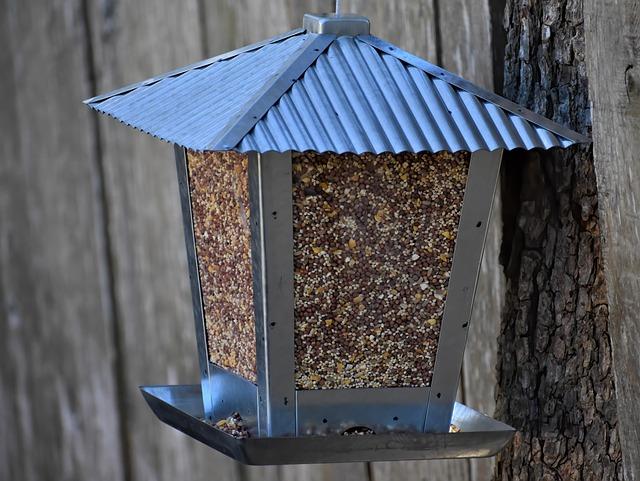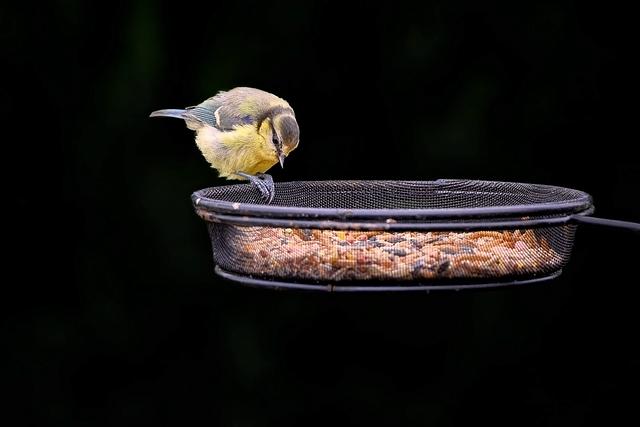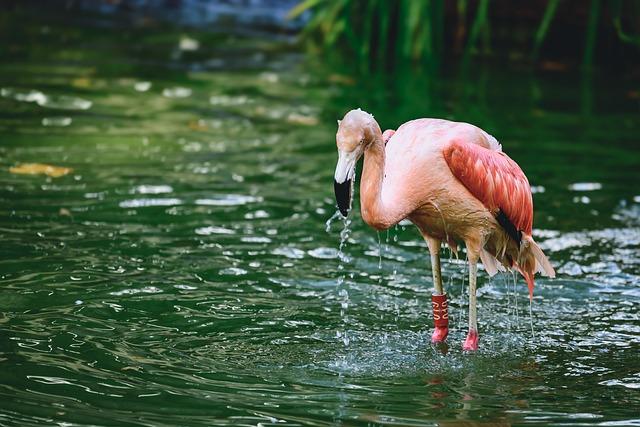In the hustle and bustle of modern life, our backyards can serve as a sanctuary, a space where nature’s symphony unfolds before our eyes. One simple yet transformative way to invite this melodious spectacle is through the installation of bird feeders and baths. These enchanting additions not only offer a refuge for our feathered friends but also provide a captivating glimpse into the intricate tapestry of wildlife that inhabates our gardens. By strategically placing these elements, we can create an ecosystem that encourages diverse avian visitors, turning our outdoor haven into a thriving hub of activity.In this article, we will explore the art and science behind selecting, positioning, and maintaining bird feeders and baths, as well as the myriad benefits they offer in fostering a deeper connection to the natural world. Join us as we delve into the delightful world of avian attraction and garden enrichment, and discover how you can transform your outdoor space into a vibrant wildlife oasis.
Choosing the Right Bird Feeder for Your Garden Environment
When selecting a bird feeder for your garden, it’s meaningful to consider the local environment and the species of birds that inhabit it. Feeder type should align with the dietary preferences of the feathered visitors you wish to attract. as an example, if your garden is a haven for seed-eating birds, consider using platform feeders or tube feeders that accommodate sunflower seeds, nyjer seeds, or mixed blends. Alternatively, if hummingbirds frequent your garden, a specialized hummingbird feeder with a sugar-water solution will serve them well. Furthermore, consider the material and design; a weather-resistant feeder will withstand the elements while a squirrel-proof design can thwart unwanted visitors.
Another essential factor in your choice of bird feeder is the location. Positioning is key to making your garden welcoming. Ensure the feeder is placed near natural shelter, such as trees or shrubs, which provides birds with a sense of security. Additionally, avoid locations that are too exposed to harsh weather conditions or where potential predators may lurk. A proper height for your feeder can also make a significant difference; typically, feeders should be hung at a height of 5-6 feet. Consider these local garden characteristics to create a haven for birds,turning your outdoor space into an inviting sanctuary.

Optimal Placement Strategies to Maximize Bird Visitors
To create an inviting habitat for birds, consider the angles and locations of your feeders and baths. Placing feeders at a suitable height—typically between 5 to 10 feet off the ground—can help attract a variety of species. Additionally, consider positioning them near trees or shrubs, which provide natural cover for birds as they approach. This natural concealment can reduce the risk of predators, making your garden a safer haven for feathered visitors. Ensure feeders are in clear sightlines, enabling birds to spot them easily while still enjoying the security offered by nearby foliage.
Another effective strategy is orienting your feeders and baths towards the sun. This positioning not only helps keep the food dry but also offers a warm basking spot for birds during colder months. Using a variety of feeders and baths can also entice diverse species; some birds prefer platform feeders, while others enjoy tube or hanging feeders. To further facilitate the influx of birds, maintain a balance between feeders, baths, and nearby perching spots.Here’s a simple table for swift reference on ideal feeder and bath placements:
| Feature | Ideal Placement |
|---|---|
| Feeders | 5-10 feet above ground, near cover |
| Bird Baths | Shaded with nearby shrubs, direct sunlight |
| Perches | Close to feeders/baths for easy access |

Selecting the Best Bird Bath styles for aesthetic and Functionality
Choosing the right bird bath can turn your garden into a vibrant sanctuary for both avian friends and human admirers. When selecting a bird bath, consider styles that enhance your outdoor aesthetic while ensuring functionality. Here are some popular styles to consider:
- Classic Pedestal Bird Bath: This timeless design features a raised basin, allowing birds to easily access water while also adding an elegant touch to your garden.
- Hanging Bird Bath: A hanging option provides flexibility in placement and can be perfect for smaller spaces,bringing charm to trees or hooks.
- Decorative Bird Bath: With intricate designs or vibrant colors, these baths not only serve birds but also act as eye-catching garden ornaments.
- Modern Minimalist: Sleek and simple designs can complement contemporary gardens, focusing on clean lines and subtle elegance.
Functionality is equally crucial when making your selection. The following features can make a bird bath more enticing for wildlife:
| Feature | Benefit |
|---|---|
| Shallow Basin | Prevents drowning, allowing birds of all sizes to drink safely. |
| Textured Surface | Provides a safe grip for birds while hopping around. |
| Solar Fountain | Attracts birds with moving water, making it more appealing for bathing and drinking. |
| Easy to Clean | Maintains hygiene,ensuring the water remains fresh and inviting. |

Creating a Wildlife-Friendly Habitat Beyond Feeders and Baths
Enhancing your garden for wildlife extends far beyond the basic provisions of feeders and baths. Native plants serve as vital resources, offering food and shelter to a variety of creatures, including birds, insects, and small mammals. Choose a range of species that bloom at different times of the year to provide a consistent supply of nectar and seeds. Additionally, consider incorporating the following elements into your landscape to create an inviting atmosphere:
- Brush Piles: Create a safe haven by leaving fallen branches and leaves.
- Logs and Stumps: These can offer shelter and attract insects, which in turn draws in insectivorous birds.
- Water Features: Beyond bird baths, ponds or small streams can draw in a wider range of wildlife.
Equally important is the establishment of shelter for wildlife.Including features such as birdhouses, bat boxes, and insect hotels can considerably increase the diversity of fauna in your garden. To effectively accommodate various species, consider a diverse array of shelter options according to their specific needs. Use the following table as a guide:
| Type of Shelter | Ideal Inhabitants |
|---|---|
| Birdhouses | Chickadees, Bluebirds |
| Bat Boxes | Bats |
| Insect Hotels | Bees, Ladybugs |
| Log Piles | Frogs, Snakes |
The Way Forward
As we close the chapter on our exploration of bird feeders and baths, it’s clear that these simple additions can transform an ordinary garden into a vibrant wildlife haven.The delightful chorus of chirps, the graceful flutter of wings, and the sheer joy of observing our feathered friends reconnect us with nature in a profound way. By inviting these creatures into our outdoor spaces, we not only enrich our own lives but also contribute to the conservation of biodiversity.
weather you opt for a rustic wooden feeder or a stylish birdbath, each choice reflects your personal touch and commitment to fostering a thriving ecosystem. So, gather your supplies, embrace your creativity, and watch as your garden turns into a sanctuary for birds and other wildlife alike.
In a world where nature frequently enough takes a backseat,let your garden be a reminder of the beauty that resides in the wild,waiting to be invited in. With patience and care, you can create a living tapestry filled with the colors and sounds of nature that will inspire joy for years to come. Happy birdwatching!

